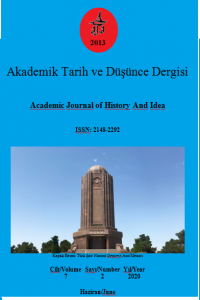Из Ранней Истории Кутийской Области Навар/Намар
Цель исследования – проанализировать сведения клинописных текстов конца III тыс. до н.э., имеющих отношение к политической истории области Навар (иначе Намар; между притоками Тигра Аджем и Дияла). В статье осуществлён палеографический анализ наскальной надписи из Дербенди-Белула и царских списков. Ставится вопрос о принадлежности рода Шадармата не к хурритам, как это представлено в ассириологической науке, а к кутиям. Около 2175 г. до н.э. кутии (этнически родственные хурритам племена) устанавливают политический контроль над городами Южной Месопотамией и соседнего Элама. После Ярлагаба, из за политического кризиса, правители гутиев не могли удержаться у власти более 3 лет, в Намаре Шадармат установливает своё господство. Он был верховным жрецом храма бога Нергала. Его старший сын Аталсен(по-хурритски talmi+seni«старший брат») расширил свои владения до Уркиша (совр. Тель-Мозан в Сирии). Младший сын Шадармата Илисир (иначе Лисир, по-хурритски ilziri «Последний») в честь покорения области Аван в селе Дербенди-Белула (в долине Хурин-Шейххан, недалеко от границы Ирака с Ираном) оставил наскальную надпись. После падения господства кутиев в Южной Месопотамии (2109 г. до н.э.) род Шадармата потерял контроль над долинами Дияла.
From Early History of the Gutian District of Nawar/Namar
The purpose of the study is to analyze the information of the cuneiform texts of the end of the 3rd millennium BC, related to the political history of the Navar region (in other words, Namar; between the rivers of Adhem and Diyala, region of Jebel Hamrin). The article carried out a paleographic analysis of the rock inscription from Darbandi-Belula and the royal lists.The question is raised about the belonging of the Shadarmat’s clan not to the Hurrians, as it is represented in Assyriological Science, but to the gutians. Around 2175 BC. The northern tribes, where the gutians (genetically related to hurrians) were the most active, gradually managed to establish their supremacy in the south of Mesopotamia and in neighboring Elam. After Yarlagab, when due to the political crisis, the rulers of the gutians could not stay in power for more than 3 years, the dominance of Shadarmat was established in the Namar. He was the high priest of the temple of the god Nergal. His eldest son and heir Atalsien (in hurrian talmi+seni “oldest brother”) expanded his domain to Urkish (now Tel-Mozan in Syria). The younger son of Shadarmat’s Ilisir (or Lisir: in hurrian ilziri “last”) in honor of the conquest of the Awan in the village of Derbendi-Belula (in Hurin-Sheikhan, near of the Iraq-Iran border) left a rock inscription. After the fall of gutian domination in Southern Mesopotamia (2109 BC), the Shadarmat’s clan lost control of the Diyala valleys.
___
- KOZAD, A.M., The Beginnings of ancient Kurdistan (c. 2500-1500 BC): a historical and cultural syntesis, Leiden University, 2012.
- LABAT, R., Manuel d’épiqraphie Akkadienne (signes, syllabaires, ideogrammes), La 60 edition, Paris : Libraire orientaliste Paul Geuthner S.A., 1988.
- LAROCH, E., Glossaire de la lanque hourrite. Laris: Paris, EditionsKlincksieck, 1980.
- MEEK, T.J. Excavations at Nuzi. Vol. III. Old Akkadian, Sumerian and cappadocian texts from Nuzi, London, 1935, LIX +XCIII pl.
- MANUEL, J., MOLINA. TestiamministrativiNeosumericidel British Museum. BM 13601-1430, Materiali per il Vocabular Neo-Sumerico, 22, Rome: Bonsignori Editore, 2003, 248+XXXIV pl.
